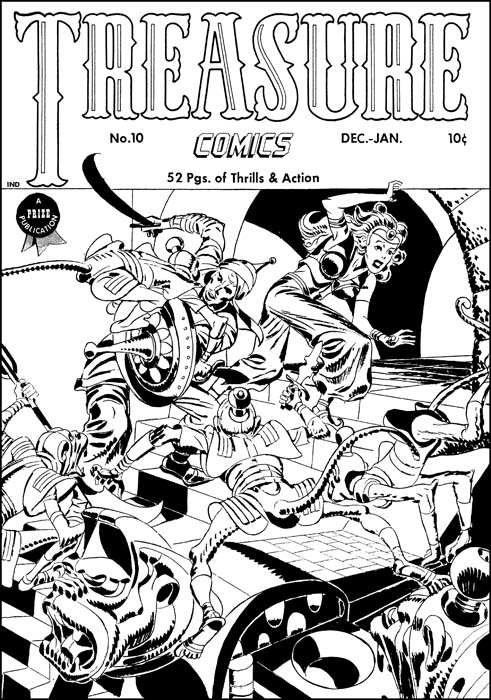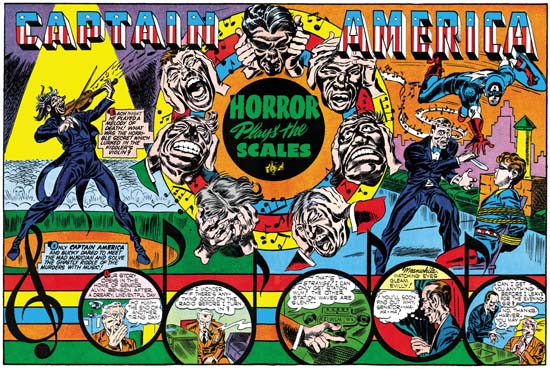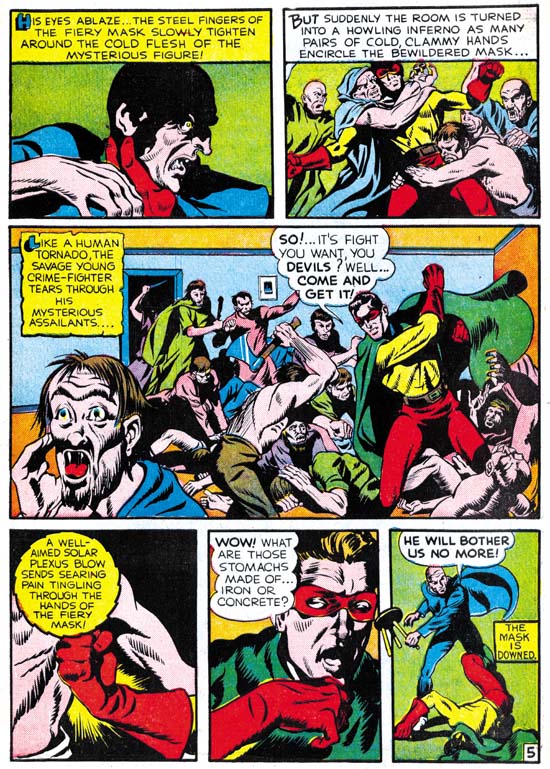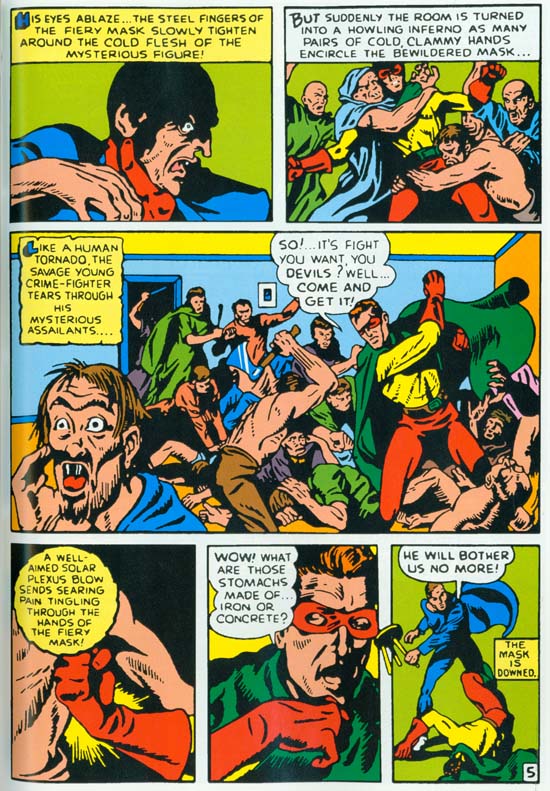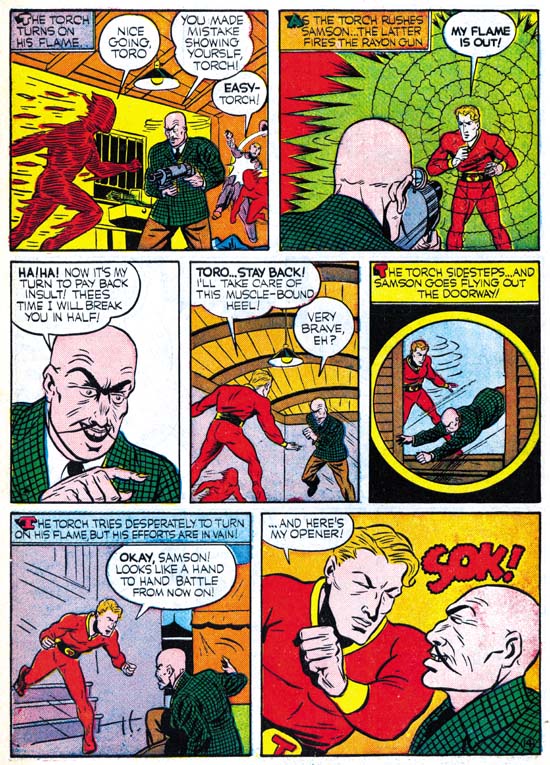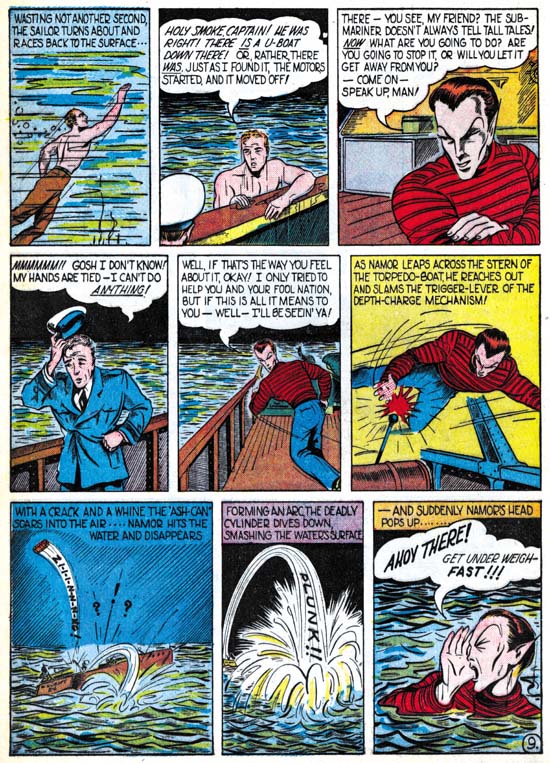Some time ago I posted about the practice of reconstructing art that Marvel was using in their Masterworks reprint volumes (Recreation Vs. Restoration, How Should Reprints Be Done?). I was, and still am, rather critical of that approach. My criticism is not just theoretical, some of the reconstructions made in the past have been very poor indeed (The Human Torch #2). I concluded my Recreation Vs. Restoration post with the observation that the use of reconstructed art makes Marvel reprints of little use for me and that I would no longer be buying them. But of course, one should never say never.
I have long been on the look-out for a copy of Daring Mystery #5 (June 1940). Some have claimed that the Trojak story contained in the issue was drawn by Joe Simon. This was altogether possible because I believe Joe did do the Trojak in Daring Mystery #4 (May 1940) and he certainly drew the Fiery Mask story in Daring Mystery #6 (September 1940). Even if Simon had not drawn Trojak story in DM #5 I still thought it would be nice to see the story of this Simon created character. However Daring Mystery comics are rare in any shape and I have searched for many years in vain for an affordable copy of issue #5. So when I saw the recently released Marvel Masterwork’s Daring Mystery Volume 2 I decided that even reconstructed art was good enough for my purposes and bought a copy.
Although I had not bought a Masterwork volume for some time I did have an occasion to see the quality of the reconstruction was done in a Marvel Mystery Comics reprint volume. When the Best of Simon and Kirby book came out I received some criticism on the Marvel Masterwork forum for the restoration that I did on the volume. At one point someone posted a scan of the splash page of the Vision story from a Masterwork book. A comparison of the scan with one from the same splash from BoSK showed some rather poor reconstruction in certain areas in the Masterwork version.

Daring Mystery #6 (September 1940) “The Fiery Mask” page 4, pencils by Joe Simon
Now that I had the Daring Mystery volume I was curious on how well the reconstruction was done. Of course I did not have a copy of DM #5 but I did have copies of the other issues. At a glance the reconstruction of the story art (by Pacific Rim Graphics) looked pretty good. But I decided to take one example (the demon figure from the Fiery Mask page shown above) and overlay scans from the original comic and the reprint.
I digitally bleached both scans so that for the most part only the line art remained. I changed the line art of the original comic to red and that from the Masterwork to cyan (blue). If both were identical the resulting lines would look black but deviations would show up in one of the two colors. Experience has shown that you never get perfect overlays. Even scans from the same comic will vary from day to day. Paper “breaths”, it expands or contracts with humidity changes.
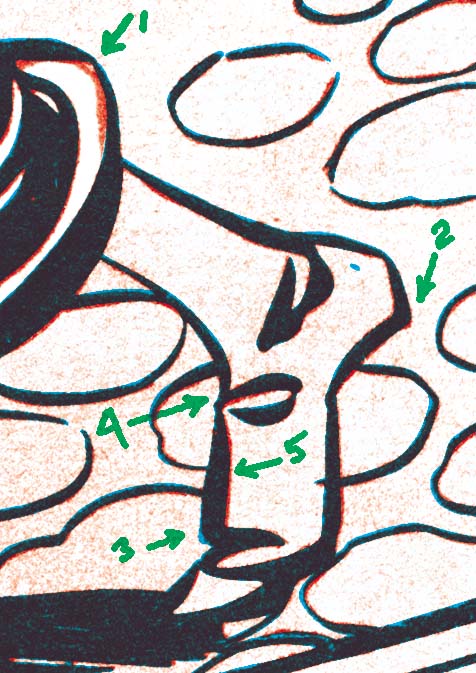
Original: red line art
Masterwork: blue line art
To illustrate what I found I have shown a close-up of the Demon’s foot. I have marked the most glaring difference as item 1. However the error in this case is due to the digital bleaching I did. The robe was red while the background was green. The registration was not perfect and the cyan (blue) of the background printed over a portion of red. The red (magenta and yellow) and cyan inks combined to form black. Chemical bleaching would have removed the erroneous black but digital bleaching does not. But the black due to the registration error and the black ink of the line art are not identical. If I were doing the restoration I would edit the result based on that difference and as far as I can tell the Masterwork’s reconstruction is accurate.
My registration is not perfect and as I described above variations due to paper expansion or contraction are also expected. Therefore I would not judge most of the failures to overlay correctly to be of any significance. The one I marked as 5 shows that the original comic was slightly to our right. However the line on the opposite side of the foot is also slightly to the right. I expect both “errors” are due to the problems I described above and are not reconstruction errors. There are also other variations in line width that could be explained by variations in the printing. However it is also possible that they are reconstruction errors but I cannot tell without seeing the actual comic used in the Masterwork reconstruction.
Now look closely at the heel (marked as 2). The bottom of the heel in the original comic was not smooth but deviated slightly near the end. This cannot be explained by the factors discussed above and is I believe an error in the reconstruction. On the opposite side of the foot (marked 3) is a case were the reconstruction has added an angle that was not present in the original. The fold spotting pointed to by item 4 also deviates in ways that seem to reconstruction errors.
One might think that I am criticizing Pacific Rim Graphics for the reconstruction job they did. Actually far from it, I believe they did an excellent job. These are really small errors that can only be seen when magnified and would be difficult to spot with the naked eye.
The covers were reconstructed by another (Michael Kelleher). This is same reconstructor that I mentioned in my earlier post who admitted to using a primitive reconstruction method (inking on tracing paper) and was completely clueless why some would find this objectionable. I did not do an overlay of his work but careful examination suggests it was accurate. The only thing I noticed was that his lines were consistently narrower than those from the original comics. Perhaps the original comics he used had been better printed or perhaps this was done on purpose.
I did not have time to make detailed comparisons of all the work from Daring Mystery issues 6 to 8 with the Masterwork volume but overall they looked good. I feel this volume does justice to the original artists. Does that mean I approve of the use of reconstructed art? Not at all, I still prefer scans. No matter how well done, a reconstruction is still one artist’s interpretation of another artist’s work. But let us be frank, the reader will unlikely to find a single coverless issue of Daring Mystery for the price of the Masterwork volume.
One little warning about the Masterwork book, the cover for Daring Mystery #7 was not drawn by Joe Simon. I have no idea how such an obvious mistake was made.


